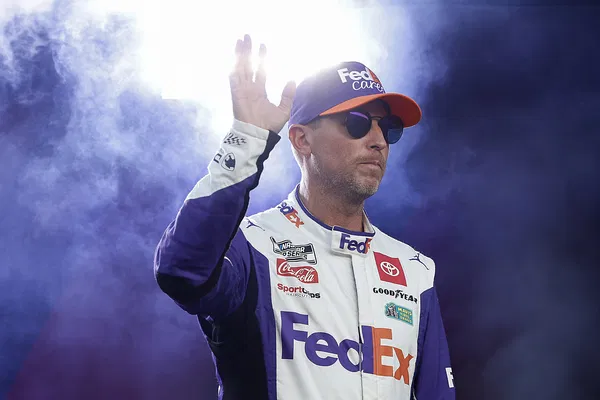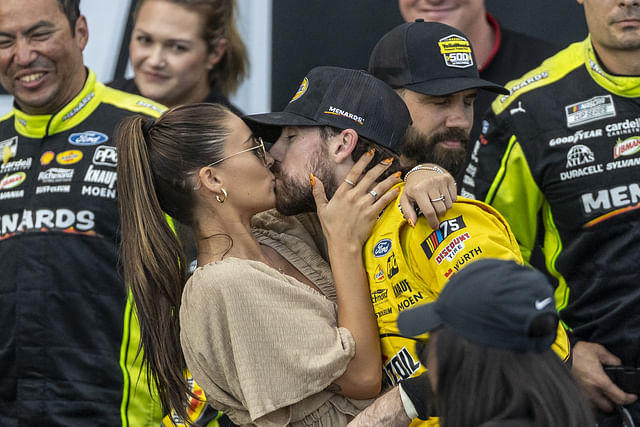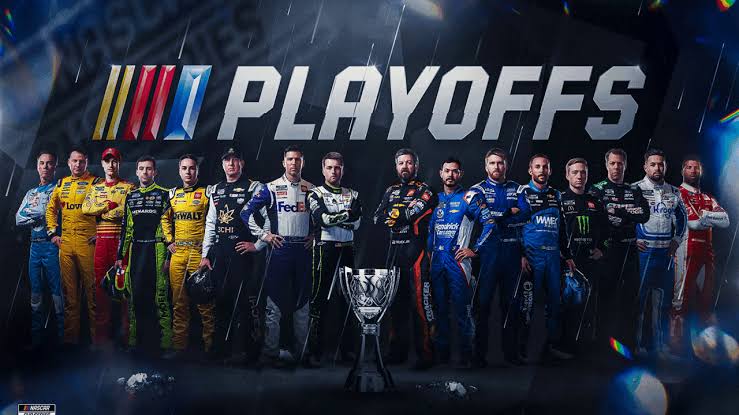When fans tune in to watch sports, it’s usually to see their favorite athletes or teams in action. Many fans follow the top names in a given sport, with their admiration typically beginning when one athlete or team stands out above the rest. In NASCAR, this can be difficult to spot since all drivers use cars that are quite similar in performance. Because of this, it ultimately comes down to the skill of the driver, the strategy of the crew chief, and the effectiveness of the team to make them stand out. Before the introduction of the NextGen cars, there were still some technical differences between vehicles that could provide certain teams with an advantage. However, the NextGen cars have evened out the playing field, making overtaking more challenging and reducing dominant performances. NASCAR driver Denny Hamlin highlighted this issue on his podcast, where he discussed how NASCAR’s recent changes have “killed star power” within the sport.
So, how exactly have NASCAR’s new rules contributed to the decline of star power?
First, let’s understand what star power means. Star power refers to individuals within a sport who draw more attention and fans than others, often due to their ability to connect with the audience beyond the sport itself. In many sports, there are standout stars—like Lionel Messi and Cristiano Ronaldo in soccer—who become household names and attract fans worldwide. However, NASCAR operates differently. In recent years, the sport’s governing body has pushed to make all cars as uniform as possible. With the introduction of the NextGen cars, NASCAR has focused on achieving parity, meaning the cars are designed to be as equal in performance as possible.
On his podcast *Actions Detrimental*, Denny Hamlin reflected on the impact of this shift. Discussing the effect of NextGen cars after the Bristol race, Hamlin said, “But with that, you kill star power, because if everyone’s the same, who are your stars, right? You need the best to go out there and win.” Hamlin pointed out how this was particularly evident during the Bristol night race, stating, “It’s just a challenge at that track when you have cars that all run the same speed. Good luck! You’re just not going to create passing that way. That’s the downside to parity and the downside to star power—things like that, right?”
Hamlin’s primary concern with the new cars is that they have transformed the competition into more of a track position race, rather than one where drivers can showcase their individual skill through overtaking and strategic maneuvers. As he explained, “The fundamental design of this next-gen car is to create a more equal field, and while I think it has created more equality, it’s just become more of a track position race than ever.” The difficulty comes from the fact that, on tracks like Bristol, all the lanes feel the same and the cars reach the same top speeds, making it tough to differentiate one driver’s performance from another.
Hamlin likened the situation to other sports, drawing a comparison to the NFL, saying, “There’s a reason why the Chiefs and the Ravens always play prime-time games, right? Because they have the stars, and people tune in to watch them.” This analogy highlights the importance of having recognizable stars that fans tune in for. In NASCAR, however, Hamlin explained, “You’ve got to have cars to pass. There are not enough; like Chris Gabehart said, there are not enough things for us to work on to really differentiate the speeds of the cars.”
Given this situation, Hamlin believes that NASCAR needs to do something to elevate its star drivers. But this leads to a bigger question: how do you distinguish star drivers in a field where everyone is competing with nearly identical equipment? While this is a topic open to debate, one thing became clear during the Bristol race—Hamlin no longer blames his new dog Lulu for his recent struggles on the track.
Before the Bristol race, Hamlin had been in a slump, and it all seemed to begin when he brought home Lulu, a dog his daughter Taylor had asked for. His bad luck started when a win at the previous Bristol race was nullified due to Toyota Racing Development violating NASCAR’s rules, resulting in a hefty fine for his crew chief and a loss of points. To make matters worse, Hamlin had several races where he didn’t even break into the top 10—an unusual streak for the veteran driver. Half-jokingly, he began to associate his bad results with bringing Lulu into the family, even entertaining the idea of finding her a new home.
However, Hamlin’s fourth-place finish in the Bristol playoff race marked a turnaround, securing him a spot in the next round of the championship. Now, with a strong run and points on the board, Hamlin has decided Lulu is no longer bad luck and has earned her place in the family.
As Hamlin’s season continues, the question remains: after two decades of competing, will this finally be the year he claims the elusive Cup Series championship? Share your thoughts in the comments below.
Denny Hamlin Bashes NASCAR For ‘Killing Star Power’ With Brutal Verdict on Parity Obsession




